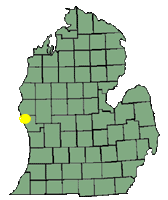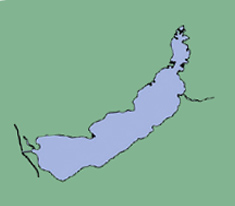|
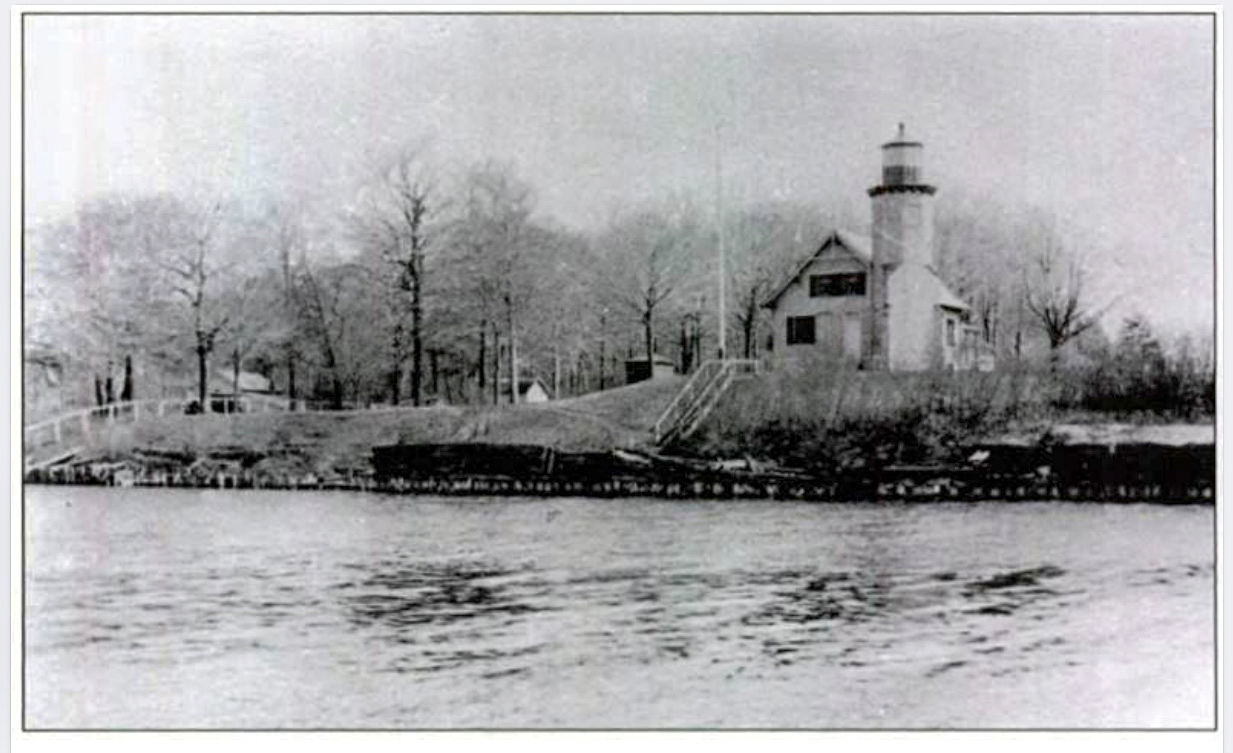
Lighthouse with wooden channel
walls in disrepair
| While the White River Light Station now looks over a busy channel
of pleasure boats, recreation was not the reason the Light Station or
the channel came into being. The reason was due to economics.
The thriving lumber
industry in the mid-1800s needed a better, more direct outlet from
White Lake into Lake Michigan than the meandering water access north
of the current channel. Mill owners such as Charles Mears and Giles
Slocum were instrumental in requesting the building of a new channel .
Finally in 1866, Congress appropriated $67,000 for the project. The
lands for the light station and channel were obtained by deeds from
Charles and Carrie Mears and the William Ferry Estate. Nearly twenty
years after the first efforts, the channel was finally completed,
along with a new beacon light on the south pier.
In 1871, 635 vessels
cleared the harbor at White River carrying over 61,000 tons of cargo,
including 44,835,000 feet of lumber, 32,340,000 shingles, 61,600
railroad ties, and 450 bushels of potatoes. Lumber from the area’s
numerous sawmills was obviously the primary export, and would only
increase as Chicago had to rebuild following its Great Fire of 1871.
In 1872, the beacon
light was on a 27-foot wooden tower with a range of 11 miles. A local
man and former seaman, William Robinson, was hired as the first light
keeper
After repeated
requests for three years, the U.S. Government appropriated $8,300 for
a keeper’s dwelling and a tower. Construction of the lighthouse at the
White Lake Channel began on August 28, 1875. Using a “Norman Gothic”
design that has been used on Chambers Island, Wisconsin, it would also
be used later at several other Great Lakes locations, including Eagle
Bluff, McGulpin Point, Eagle Harbor, St. Clair Flats Canal, Passage
Island, Sand Island and Squaw Island. E. Rhodes, a construction
foreman for the Lighthouse Service, oversaw the work, but Keeper
William Robinson pitched in and did some of the masonry work himself. |
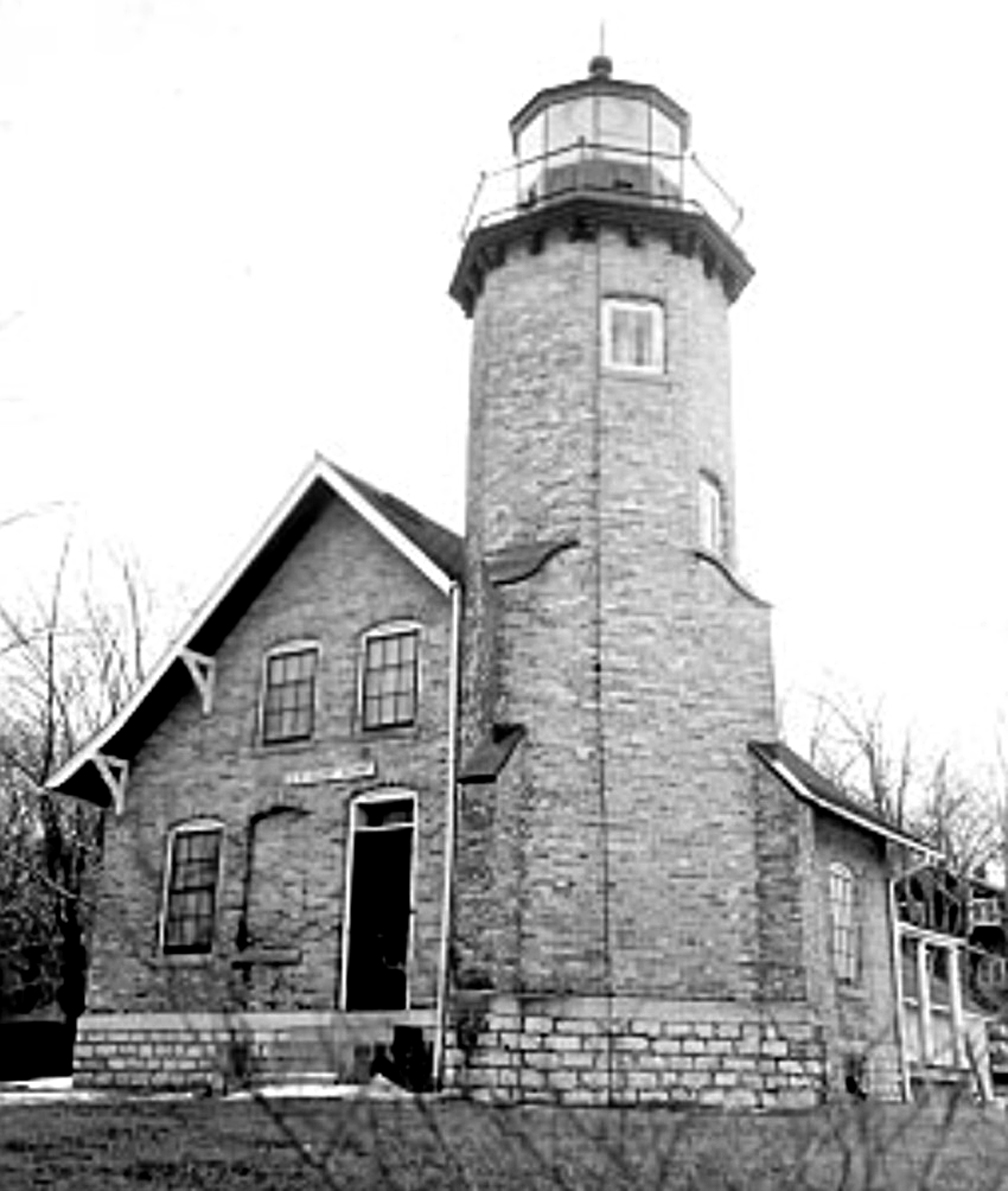
| The lighthouse consists of a tower set in the northwest corner of
a gabled-roof, one-and-one- half- story structure. Limestone was used
for the foundation and yellow brick for the superstructure. Though
square at the base, the tower’s corners are beveled mid-way up to
create an octagonal form. Work on the lighthouse wrapped up on
December 28, 1875.
In February 1947, the light was automated and the U.S. Coast Guard,
who had jurisdiction over both the Lighthouse and the Coast Guard
Station, ordered the lighthouse closed.
The lighthouse
consists of a tower set in the northwest corner of a gabled-roof,
one-and-one- half- story structure. Limestone was used for the
foundation and yellow brick for the superstructure. Though square at
the base, the tower’s corners are beveled mid-way up to create an
octagonal form. Work on the lighthouse wrapped up on December 28,
1875.
In April 1876, Mr.
Crump, the district lampist, arrived to install a fourth-order Fresnel
lens in the lantern room. On May 13, 1876, Keeper Robinson activated
the new light whose characteristic was a fixed white light, varied
every minute by a red flash. The period of the flash was reduced to
forty seconds on December 12, 1892, and then in 1902 the light’s
characteristic was changed to alternate red and white flashes, with
twenty seconds between each flash.
A brick oil house
with a metal roof and door was added to the station in 1902, and in
1917, the color of the pierhead tower was changed from white to red.
While the pierhead
light was electrified in 1917, the main light and dwelling did not
have electricity until 1924, when electrical power finally made its
way around the south side of the White Lake Channel.
In 1919, eighty-seven
year old Keeper Robinson was told that he had to retire and let
William Bush, his grandson who had been serving as his assistant since
1911, take charge of the light. But the feisty octogenarian wasn’t
going to leave the lighthouse he had called home for over forty years.
As the inevitable became clear, Keeper Robinson became terribly
depressed, and it seemed he willed himself to die before he had to
leave. He died on April 2, 1919. His wife Sarah had died October 20,
1891. They are both buried in the Mouth Cemetery. |
Lighthouse keeper William Robinson and his wife Sarah
| In February 1947, the light was automated and the U.S.
Coast Guard, who had jurisdiction over both the Lighthouse and the
Coast Guard Station, ordered the lighthouse closed.
William E. Bush had succeeded his grandfather as Lighthouse Keeper
from 1919-1943. U.S. Coast Guardsman Leo Wuori (along with his wife
Frances) took over from 1943-1948; U.S. Coast Guardsman Guy L. Gordon
from 1945-1947; Civilian Frances Wuori Johnson from 1949-1954; U.S.
Coast Guardsman Andrew Newald from 1954-1959.
The White River
Lighthouse was deactivated in 1960 and turned over to the General
Services Administration. Fruitland Township expressed an interest in
the property in 1965, and the government agreed to sell it for $6,250,
half of its appraised value. The Sylvan Beach Association, comprised
of nearby vacation property owners, raised the necessary funds.
In 1970 the property
was opened as a museum. A series of curators were hired over the years
to see to the day-to-day operations of the museum and gift shop. Those
curators included:
R. C. “Pete” Caesar
from 1969-1975; Richard & Vicki Gebhart from 1976-1978; John & Ruth
Klunder in 1979; Ken Dziesinski and his wife Karen McDonnell came in
1983. Following their divorce, Karen continued as the Lighthouse
Curator until 2012.
In 2012, the board of
Sable Point Lighthouse Keepers Association signed an agreement with
Fruitland Township to operate the gift shop and museum at the White
River Light Station. |
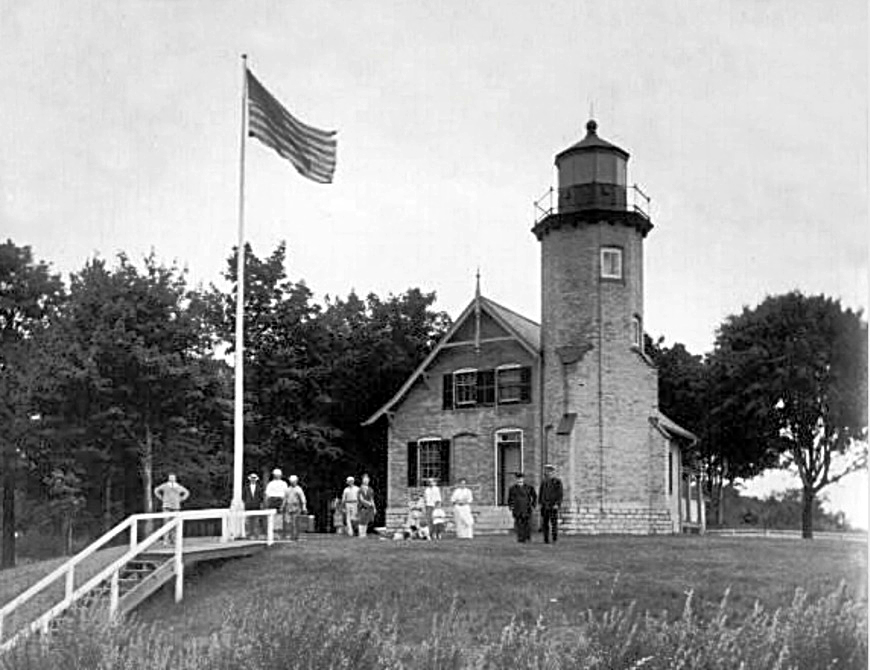
Capt Robinson and his son Thomas, standing on the right in the photo,
with some visiting friends. ca1925.
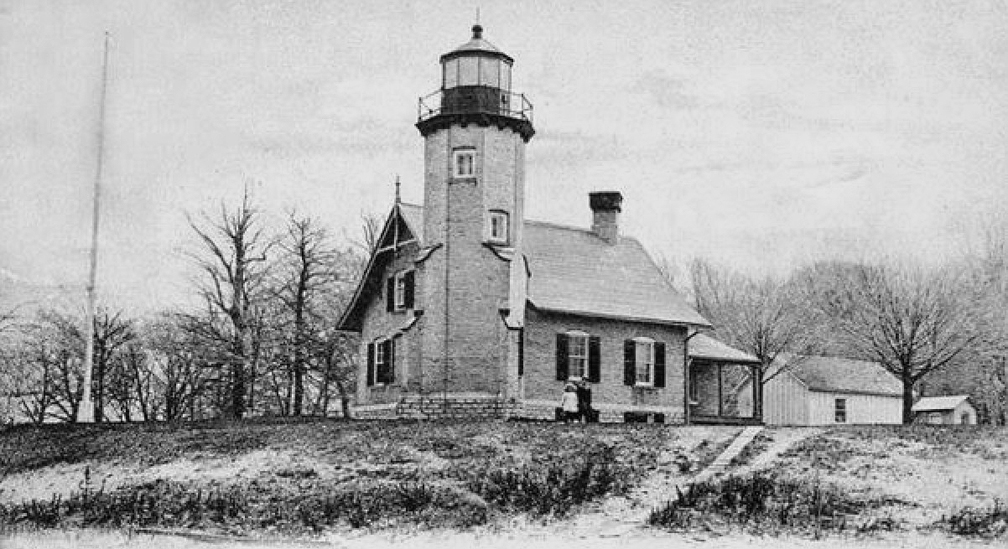
ca1906
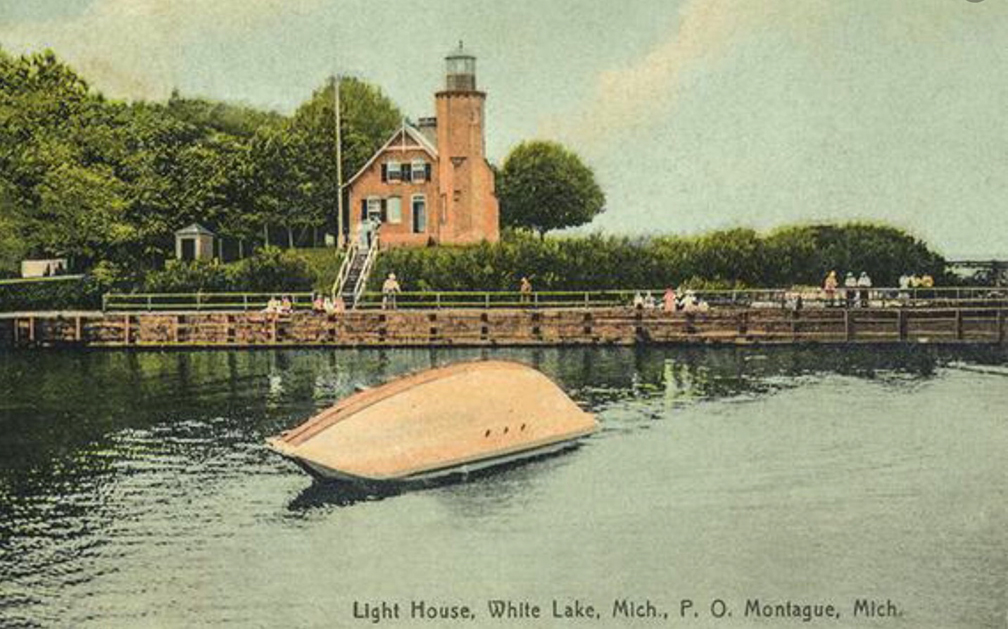
ca1910 – Capsized boat is a Coast Guard training vessel
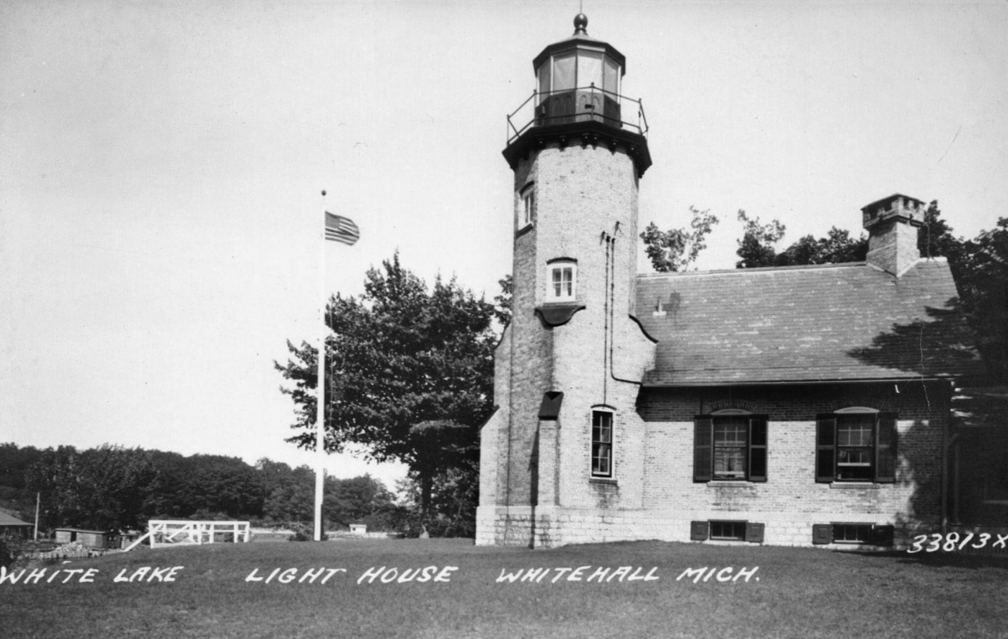
ca1928-1940
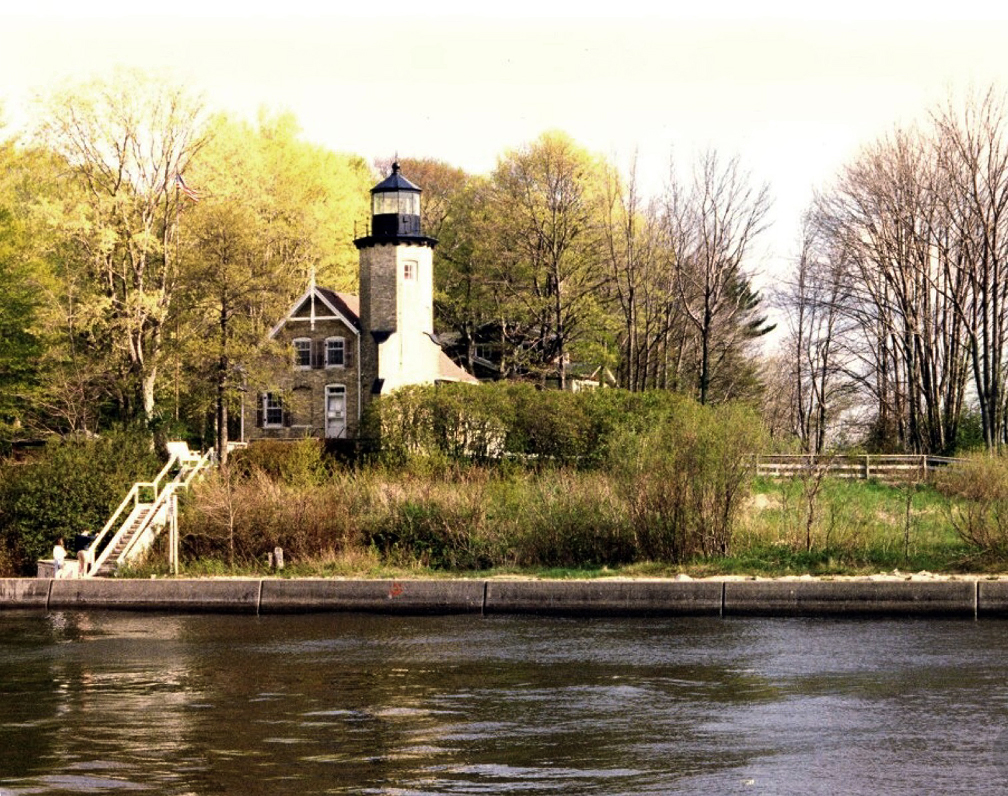
Sometime between 1936 & 1998

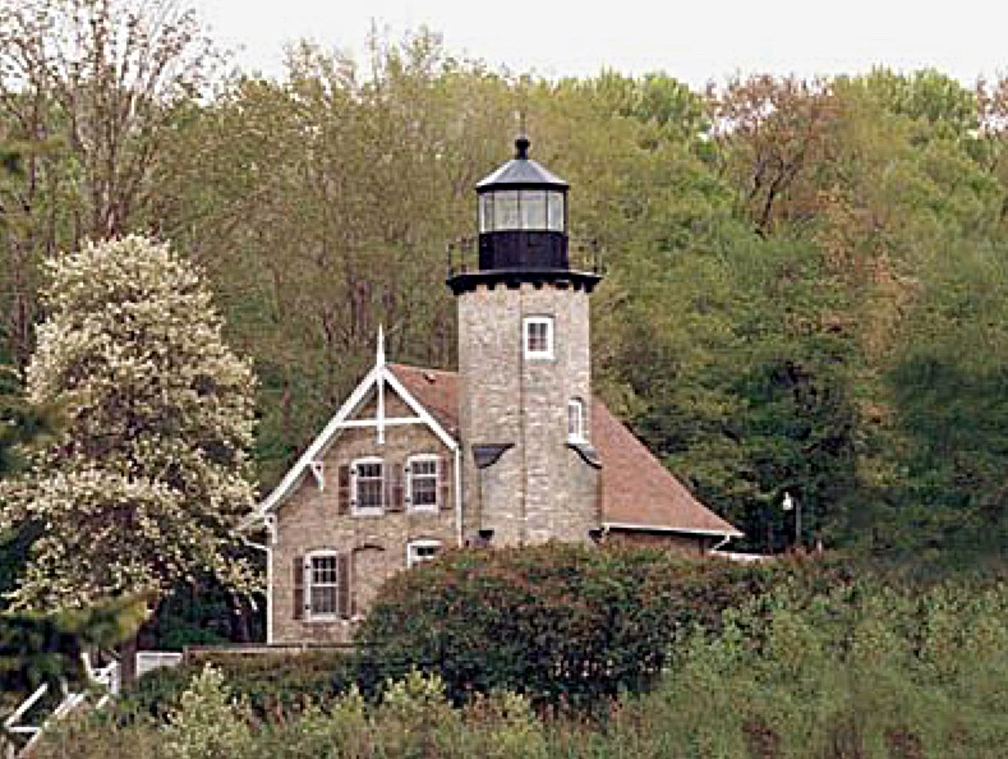
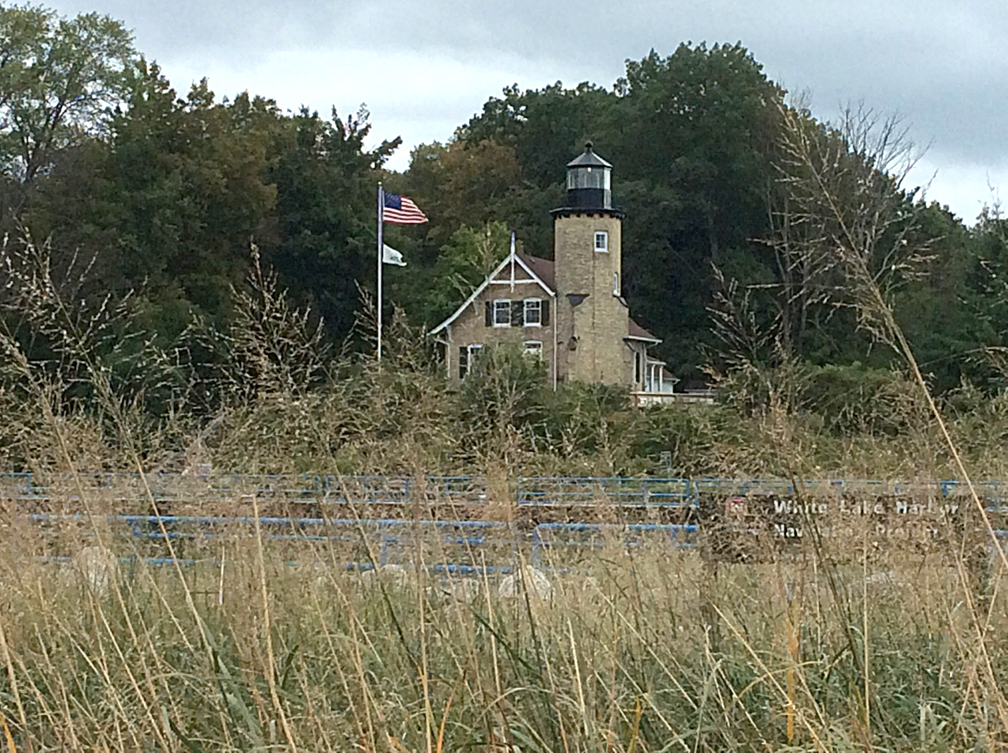
ca2019
|
